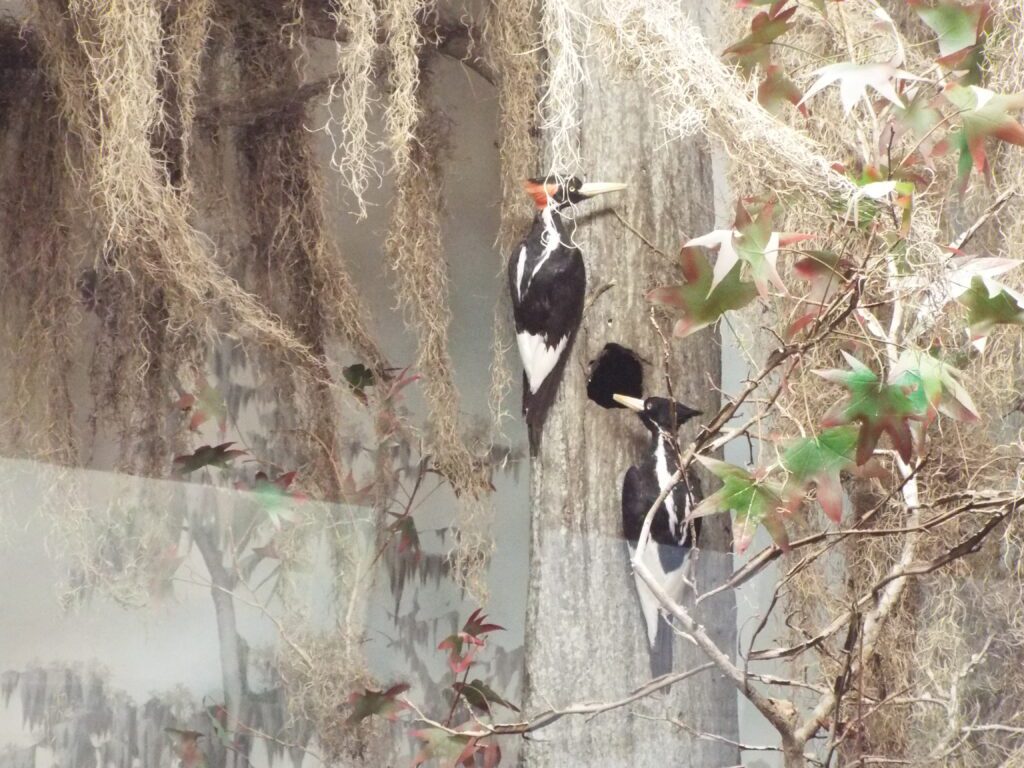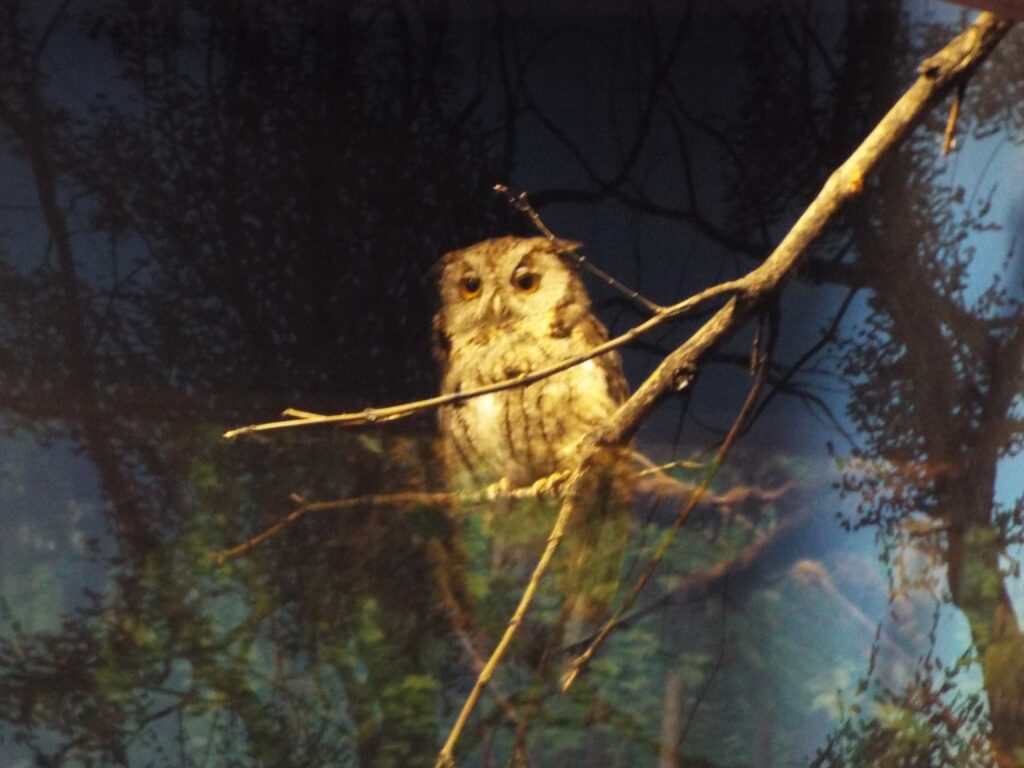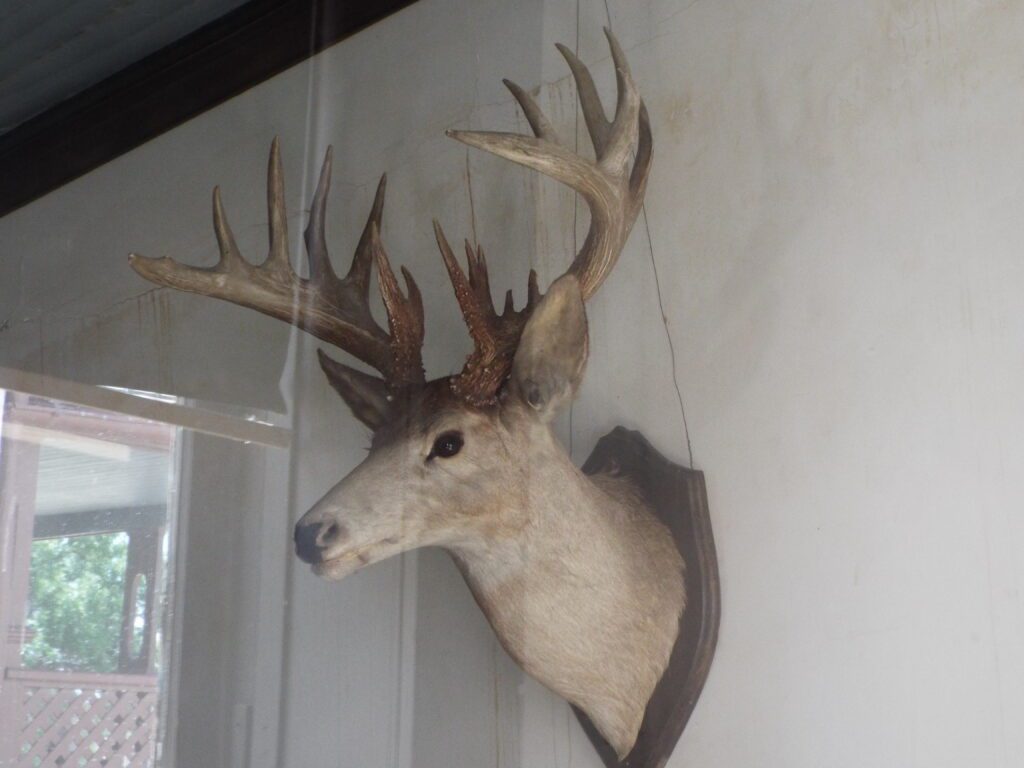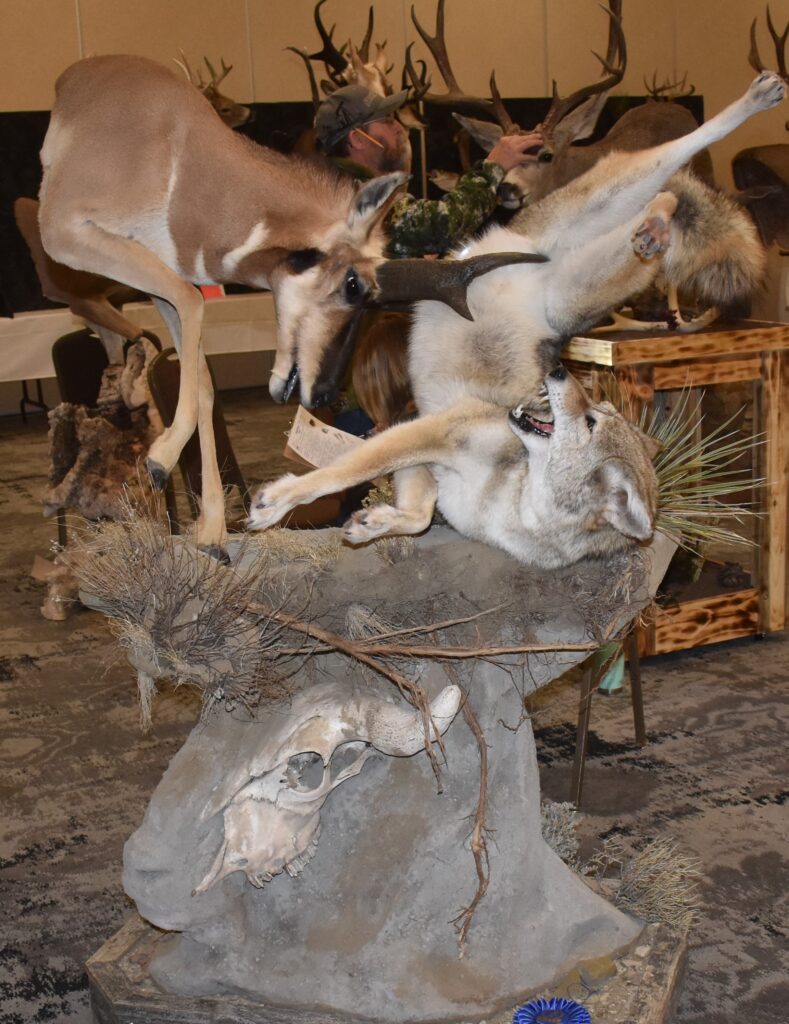News
A Brief History of Taxidermy in Sheridan
Published
2 years agoon
By
cvannoy
It is fall and fall means hunting season in Sheridan and the surrounding area. Once a hunter downs a fine trophy, he wants to preserve it. Enter the taxidermist. The word, taxidermy, is made up of two Greek words, ‘Taxis’ meaning arrangement, and ‘Derma’, which means skin. Therefore, taxidermy is the arrangement of skin.
Taxidermy more of less started in ancient Egypt, as early as 2200 BC, when the various pets of Egyptian royalty were embalmed and buried alongside them in the tombs.
Today, taxidermist preserve hunting trophies, and mount animals for natural history museums. Museums use taxidermy to record species, including those that are extinct and threatened. In the Denver Museum of Nature and Science there is a display of the Ivory-Billed Woodpecker, considered to be extinct, or at the least extremely rare, today.

In 1886, William T. Hornaday, author zoologist, conservationist, and taxidermist, was sent to the Musselshell River in Montana by the United States National Museum. His job was to collect specimens from the last surviving herds of wild American Bison, so that future generations would know what the buffalo looked like.
Hornaday mounted the bison and they remained on exhibit there up until the 1950s, at which time the museum sent the specimens to Montana, and in 1996 they were on display at the Museum of the Northern Great Plains in Fort Benton, MT.
Later, Hornaday was one of the conservationists who helped to save the bison from extinction.
From The Buffalo Bulletin, February 18, 1909: Game and Fish Laws, Section 7: The state game warden shall be allowed to grant a permit to the agents of the Smithsonian Institute, or other well known scientific institutions. To take and ship out of this state, game animals or birds for scientific purposes. He shall lie allowed to grant permits to bona fide taxidermists, under the supervision of himself or assistants, to collect and mount game or game in families for institutions within the state for educational or scientific purposes. He shall also have authority to capture any of the game animals of this state, in localities where species of such game animals are sufficiently abundant and transport the same to localities in the state where such species are scarce or absent, to be liberated. He shall also have authority to capture any of the game animals of this state and permit the same to be transported out of the state in exchange for such game animals or game birds as in his judgment shall be adapted to the climate and conditions in this state: such game animals or game birds to be liberated in each locality as “in his judgment are best adapted for their preservation and propagation.”

Sometimes, taxidermists get it wrong. From The Enterprise, February 1, 1902
It is alleged that taxidermists are careless in the mounting of owls. In museums and elsewhere our wise eyed friends are set up with three toes in front of and one behind the perch on which they are seated. One who has observed the habits of the hooters maintains that this is incorrect, and that no living owl ever places three toes In front of his perch. How Is this?— New York Times.
Today, mounting a raptor, such as an owl, or other endangered species are illegal. Taxidermists caught possessing endangered species can be fined or even serve jail time. Taxidermists in Wyoming are regulated by the Wyoming Game and Fish and must have a license to practice their trade.
They also take creative license, and make up new animals, like the fanciful jackalope, which is a rabbit body with small deer or antelope horns.

At first, many taxidermy specimens were simply skins stuffed with straw and formed into a rough likeness of the animal. In the early part of the 20th century, taxidermist like Hornaday and Carl Carl Akeley and others began to refine the mounting process to make the mounted animals more lifelike.
In the Sheridan area, there have been taxidermist plying their trade since at least 1891. This ad appeared in the The Buffalo Bulletin, on May 21, 1891.

And again in The Buffalo Bulletin, August 6, 1896

And this article in the Sheridan Enterprise. September 14, 1906
The Great Nelson Mounted Animal and Head Collection: The Elk, Deer, Silver Tip and Brown Bear, Gray Wolf, Silver Gray Fox, Coyotes, Beaver, Bobcat, Lynx, Groundhogs, Porcupine, and Muskrat. A Collection Valued at From Seven to Ten Thousand Dollars
As time passes and the old frontier life merges into the new conditions of Sheridan county civilization and settlement, the game and carnivorous animals of the region become more scarce year by year, and their bodies preserved by the taxidermist art more valuable to the fortunate possessor thereof. The Nelson Collection One of the most varied and valuable assemblages of “mounted” game animals of Sheridan county and Northern Wyoming is that of the Opera saloon of Sheridan Oscar Nelson, proprietor.

This collection locally includes the mounted bodies of a bull elk, a silver tip grizzly, a brown bear, a gray wolf, several coyotes, a whitetail deer buck, a beaver, two groundhogs, a silver gray fox. a lynx, several white tail deer fawns, a porcupine, a muskrat and and a bobcat, with the heads of six black tail deer and an antelope— to which are added raccoons, opossums, etc.. from more eastern and southern climes. The big bull elk, weighing eight hundred pounds, was killed and mounted by Bill Day, noted hunter and taxidermist, Mr. Day also killing and mounting the white tail deer buck. The six hundred pound silver tip bear was killed by John Taylor at the Viall sheep ranch after the bear had killed many sheep. The big gray wolf was slain by Campbell Stroud, on Prairie Dog creek, after the wolf had killed four staunch and sturdy dogs, the wolf, tipping the scales at 141 pounds.
The big black bear was killed just one year ago this month by Bill Henderson, on the sheep range of the Forbes Bros., after the big bruin had slaughtered and devoured a small sheep herd. The lynx was killed only 1 ½ miles out of Sheridan on Big Goose creek. He was alike a prominent and pugnacious member of the lynx family, weighing thirty pounds. The bob cat was slain on the O. W. ranch, on Hanging Woman creek, and is a superb representative of his savage family.
The big bull elk of the Nelson collection is valued at $1,500.00; the silver-tip bear at $1,000.00; the brown bear at $700.00; and the white tail buck, a splendid specimen of his kind, at $1,000.00. The other animals of the collection range in values from $50.00 up to $500.00, conservative estimate placing the present market value of the collection at from $7,000.00 to $10,000.00. It is doubtful, however, if Mr. Nelson would sell his collection at even $10,000.00, as its value is largely added to annually by the increasing scarcity of all the game animals represented.
Ten years from today such an assemblage of bodies and heads of the big game and carnivorous animals of the northwest as comprised in the Nelson collection will be practically priceless, constituting an independent fortune to its preserve.
Luckily today, 116 years later, with conservation efforts made possible in a large part by hunters, most of the wildlife mentioned in the above story have healthy populations in the Sheridan area.
Today, taxidermy is more of an art form. Taxidermists can purchase foam forms, eyes, and mouth pieces to help make the finished product as close to the animal as possible. Habitat materials, artificial rocks, water, plastic plants and even reproductions of small animals help to make the habitat realistic looking. Habitats make a realist backdrop for the mounted animal.

The Daily Enterprise, March 2, 1910, Sheridan Men Mount One of Finest Specimens of Deer Ever Seen in This State What is without question, one of the finest western specimens of the taxidermists’ art, has Just been completed by S. B. Clark, in shape of a mounted freak deer killed by Andy Stiles, on Powder River, last fall. Splendidly mounted, the deer stands upon a pedestal of rocks, with a painted background of lofty pines and towering mountains. A heavy gold frame surrounds the background picture and extends to the floor fringing the base upon which the animal stands. The painting was done by Clark Dalby and Frank Evans. The deer has a third horn sprouting from its skull. Mr. Clark, who is a pioneer and has trapped and hunted all over the west, is an authority for the statement that this is the first animal ever killed having three horns although many freak heads in the way of twisted and peculiar antlered growth are owned by Sheridan people. The deer and its splendid pedestal and background will be placed in the window of the D and D store tomorrow.

In The Sheridan Post, July 2, 1912, there is an article about a taxidermy exhibit was held at the Wyoming State Fair.
Taxidermy Display For the first time in the history of the state there is to be a display of taxidermy at state fair in Douglas beginning on Sept 24. The commissioners are offering excellent prizes and already promises have been received from taxidermist all over the state to make liberal exhibits. The display will include mounted specimens of both birds and animals, and it is believe there will be at least one specimen of every bird and animal that is naive to the state.

Today, the state fair does not have an actual category for taxidermy, but each year the Wyoming Association of Taxidermy Artists holds a show, displaying the best of Wyoming’s taxidermists. Last years show was held in Sheridan.
Currently, there are several taxidermists working in and around the Sheridan area. So, after the hunt, find a good taxidermist to preserve the animal and make lasting memories.

